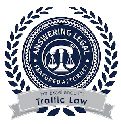
Traffic Ticket Trial – Motion Practice
Free Consultation
Our NY Speeding Ticket Lawyers at Palumbo & Associates, PC, have substantial trial experience representing motorists in city, town and village courts of NY charged with traffic crimes, misdemeanors, and speeding infractions. Many motorists represent themselves without developing evidence or spotting issues that could lead to a dismissal. Furthermore, even if a civilian does spot an issue, they do not know how to assert it properly. A pre-trial right to dismissal must be asserted through “Motion Practice.”
What is Motion Practice?
Before you can understand what motion practice is you have to understand basic court procedure. Pre-trial court room proceedings have little to do with the facts of the case. Pre-trial proceedings focus around the motorist’s pre-trial rights and the burdens placed upon the prosecutor, who represent the People of the State of New York. A motorist’s rights as well and the prosecutor’s obligations are spelled out in the Criminal Procedure Law, or “CPL.”
Think of the CPL as the rule book for the prosecution and defense of the case. Further, think of the judge as the umpire, because that’s the judge is – a neutral arbiter there to call balls and strikes. However, unlike in a baseball game he does not do this on his own. It is up to you, the defendant in a speeding ticket case, to get the judge’s attention to a violation of a rule by the prosecutor and ask for relief.
Think of it like this. Suppose in baseball after the pitcher threw a ball, instead of the umpire automatically calling a ball or a strike, he had to wait for the batter to ask for a ruling and, if the batter did not ask then it was an automatic strike, even if he would have ruled it was a ball. That’s how it goes in court. The judge is happy to give you pre-trial relief, so long as you ask. And the way you ask is through “motion practice.”
This may seem unfair, but it is not. This is because while a defendant has rights during the process, a defendant also has the right to waive a right. And there are tactical reasons to waive a right. Inasmuch as the judge is neutral he cannot help either side, nor can he presume that you are not waiving a right for a tactical reason. Those decisions are up to you, so a judge cannot stop the proceeding and say ‘I just want to let you know that you should consider making a motion to dismiss…’
Simply put, a motion is when you ask the court for some sort of relief. You “move” the court to give you the relief you want. There are 2 kinds of motions – a “noticed motion,” and a “motion in limine.”
A Noticed Motion
A noticed motion is a motion you as the defendant makes in writing. It is called “noticed” because you have to serve the prosecutor with the motion as well as file the motion in court; i.e., you are “noticing” the prosecution that you are asking for the relief. Failure to notice the prosecution will result in the court denying your application, because it is improper to have ex parte (one sided) communication with the court. Then, the prosecution can file “opposition” papers, and after that if the defendant so chooses he can then file a final “reply.” The motion gets “returned” to the court on a date requested by the motion party and is often adjourned so that the parties can file all of their papers. On the return date the court will hear oral arguments or, if the court does not want to hear any oral arguments will advise the parties that he is taking the motion “under submission.” If the court waives the oral argument, or hears oral arguments, the court will then mark the motion submitted. A court has 60 days under the law to issue a written decision. Most motions in a traffic ticket case are to dismiss. If the court grants the motion then the case is over and the motorist won. If the court denies the motion the case is put back on the calendar for further proceedings, usually a trial. Sometimes motions are made to suppress evidence or compel discovery. When that is the case the decision will be rendered and the case will continue.
A Motion in Limine
The Latin translation for “in limine” literally translates to “at the start.” In other words, a motion in limine is usually made at the start of a trial or pre-trial hearing. Generally, the moving party is making it to preclude some sort of evidence or testimony, although our office has moved in limine to dismiss and has been successful at doing so. Because they are being done in court at the start of testimony, it is not required that they be in writing on notice, however, it is always prudent to prepare a bench memorandum of law in writing to highlight your main points. Often times a court, in hearing oral arguments at a motion in limine, will stop the proceedings and advise the moving party to make a written noticed motion, set down a briefing schedule, and calendar a return and oral argument date.
Knowing when to file a Motion
The practice of law is an art and a science. It’s one thing to know and understand how to fire off a motion, it’s quite another to know if you should under the circumstances. Sometimes, even if you are correct in your assertions you can put yourself in a disadvantaged position by making a noticed motion. This is where consulting with an experienced traffic ticket defense litigator comes into play.




Advance Legal
Medicaid Fraud Attorney
Estate Lawyer NY
Advance Legal Blogspot
Brooklyn Trust and Will
